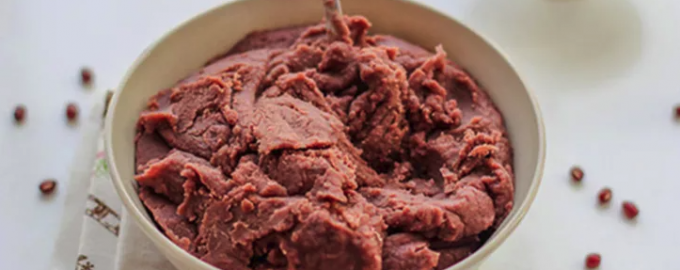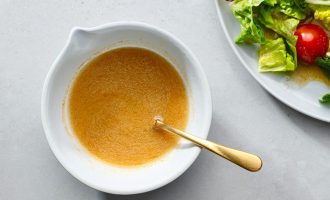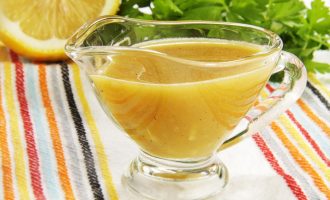Ingredients
- 200g red beans (Azuki beans)
- 200g granulated sugar
- Water (for soaking and cooking)
Per serving
Calories: 245 kcal
Proteins: 5 g
Fats: 0.5 g
Carbohydrates: 60 g
Method
-
Place the red beans in a large bowl and cover them with water. Allow them to soak overnight or for at least 12 hours. This will help soften the beans and reduce cooking time.
-
Drain the soaked beans and transfer them to a large pot. Add enough water to cover the beans by about 2 inches.
-
Bring the water to a boil over medium-high heat. Once boiling, reduce the heat to low and let the beans simmer for about 1 to 1.5 hours, or until they are soft and easily mashed with a fork.
-
Drain the cooked beans, reserving about 1 cup of the cooking liquid. Return the beans to the pot.
-
Using a potato masher or a wooden spoon, mash the beans until they form a smooth paste. If the mixture seems too dry, add a small amount of the reserved cooking liquid and continue mashing until you achieve the desired consistency.
-
Add the granulated sugar to the mashed beans and mix well. Place the pot back on the stove over low heat and cook the mixture, stirring constantly, until the sugar has completely dissolved and the paste has thickened slightly. This should take about 15-20 minutes.
-
Remove the pot from the heat and let the red bean paste cool completely. It will thicken further as it cools.
The red bean paste sauce is typically served with various traditional Japanese desserts such as dorayaki (pancake-like pastries filled with red bean paste), taiyaki (fish-shaped pastries with a red bean filling), and anmitsu (a sweet dessert with red bean paste, agar jelly, and fruit).
In conclusion, red bean paste sauce is a sweet sauce made from cooked and mashed red beans. It has a rich, earthy flavor and a smooth, velvety texture. It is a popular ingredient in Japanese desserts and adds a delightful sweetness to these treats. Red bean paste sauce is a versatile and delicious addition to any dessert lover’s repertoire.
Facts about the sauce:
- Red bean paste sauce, known as “anko” in Japanese, has been a staple in Japanese cuisine for centuries.
- It is believed to have originated in China and was introduced to Japan during the 9th century.
- Red beans are highly nutritious, rich in fiber, protein, and essential minerals such as potassium and magnesium.
- The sauce can be made with different levels of sweetness, depending on personal preference and the intended use.
- Besides desserts, red bean paste sauce is also used as a filling for steamed buns, bread, and pastries in various Asian cuisines.







